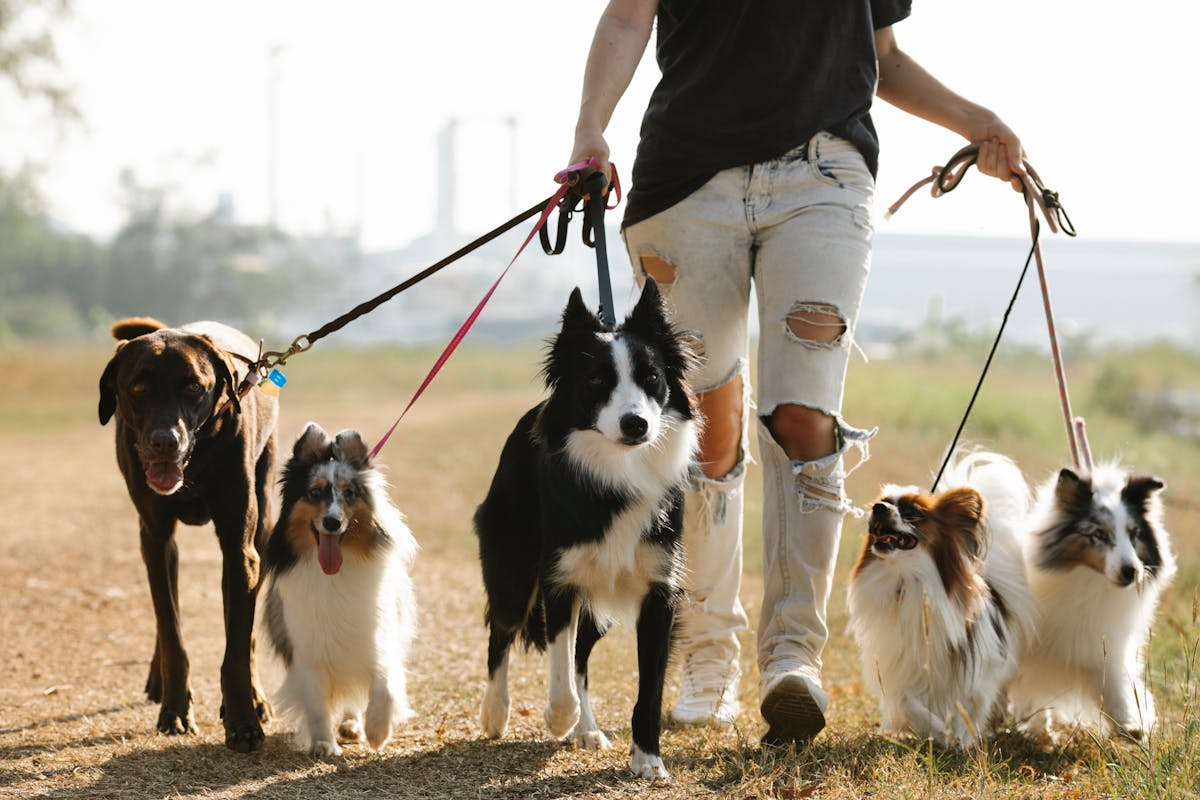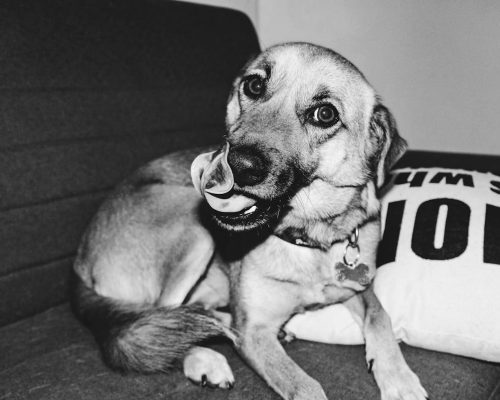Leash training serves as a rite of passage for many dog owners and their furry friends, transforming walk time into a structured, enjoyable activity that deepens the bond between pet and owner.
With proper leash training, a dog learns more than simple obedience—it learns how to interact with society in a calm and manageable way.
For the owner, leash training is about gaining control while nurturing a trusting and communicative relationship. It offers a sense of confidence and reassurance, knowing their pet is well-behaved even around new people, other dogs, and unexpected distractions.
Properly approached, leash training ensures mutual respect and an enduring connection between you and your dog, fostering a lifetime of enjoyable adventures.
Table of Contents
Toggle1. Choosing the Right Leash and Collar: Finding Comfort and Control**
One of the earliest steps in leash training is selecting an appropriate leash and collar that best suits your dog’s unique needs.
A range of leash types—standard leads, retractable leashes, and harnesses—each has its pros and cons, making it important to pick the one that complements your training goals.
Standard leashes, which offer direct control, are generally the best for initial training sessions. Retractable leashes may work well for dogs who have mastered the basics, but for beginners, they can lead to excessive pulling due to the greater freedom of movement.
When it comes to collars, finding a comfortable and snug fit is critical. A flat collar is often a great choice for training, especially for small to medium-sized dogs with milder temperaments.
For dogs that are more inclined to pull, a no-pull harness that distributes pressure evenly across the chest can make a world of difference. This approach helps reduce strain on the neck, encouraging your dog to stay focused and comfortable.
2. Starting Indoors: Building Confidence in a Familiar Setting
Introducing a dog to leash training indoors is an excellent way to build confidence without the distractions that come with outdoor settings.
A familiar environment allows your dog to acclimate to the feel of the leash without the pressures of unfamiliar sights and sounds.
Begin by attaching the leash in short intervals, pairing the action with positive reinforcement like treats and praise. Let your dog wear the leash around the house without guiding them initially.
This method allows them to explore while becoming accustomed to the slight weight and feel of the leash, making it feel like a natural extension.
Practising basic commands indoors, such as “come” or “stay,” can also contribute to initial success, providing your dog with the fundamentals of leash training.
The indoor setting provides an atmosphere where both you and your dog can focus solely on the steps of training without overwhelming external distractions.
3. Introducing the Leash Gradually: Creating Positive Associations
A sudden introduction to a leash can be intimidating for many dogs, so gradual exposure is essential. Introduce the leash during familiar, positive times of day, such as playtime or feeding, to build a welcoming association with it.
Attach the leash to their collar and let it dangle for short intervals as you engage in a fun activity. Offer treats and verbal praise as they begin to accept the leash’s presence, which reinforces their understanding that it isn’t a restrictive or frightening tool but instead a pathway to rewards.
To prevent resistance, maintain short sessions at first. Gradually increase the time as they grow more comfortable, letting them see the leash as an exciting prelude to walks and new adventures.
Building this anticipation in a gentle, consistent manner forms a solid foundation for a dog who will later approach the leash with eagerness rather than anxiety.
4. Teaching the “Heel” Command: The Foundation of Control
The “heel” command is one of the core commands in leash training. Teaching a dog to “heel” helps maintain a structured walk by keeping them close to your side.
This command is particularly useful in environments that may stimulate a dog’s curiosity or prompt distractions, such as bustling parks or sidewalks.
Begin training by holding a treat at your side, and encouraging your dog to walk alongside you. When they align with you, say “heel” and reward them with the treat and praise.
With repetition, dogs start associating “heel” with staying near you, which minimizes their impulse to surge forward. This command not only offers control but also promotes a cooperative pace that allows both of you to enjoy the journey, making walks safer and more predictable.
5. Practising Short Walks: Setting a Pace Both You and Your Dog Enjoy
When first introducing your dog to outdoor walks on a leash, it’s best to start small. Short walks help prevent sensory overload and give you control over the experience, allowing you to set a comfortable pace.
By keeping the walk short, you ensure that your dog doesn’t become tired, which can lead to frustration or disobedience.
During these initial walks, focus on reinforcing basic commands and practising calm behaviour, pausing occasionally to reward your dog for staying near you.
This technique teaches them that walks aren’t just about moving forward—they’re about learning the value of staying close, enjoying the outdoors in harmony, and remaining attuned to your guidance.
6. Rewarding Calm Behavior: Reinforcing the Right Attitude on Leash
Rewarding calm behaviour is an essential aspect of leash training. By carrying treats or toys, you can encourage your dog to remain relaxed during the walk.
Use these rewards when your dog stays near you, refrains from pulling, or responds calmly to unexpected stimuli. Timing is essential: reward them immediately after they demonstrate calm behaviour to strengthen the positive association.
Rewards should vary to maintain interest; use treats sometimes and praise others, so your dog understands that calm behaviour is always valued.
This method also enhances your bond, as your dog learns to look to you for cues and treats, fostering a strong sense of teamwork and companionship.
7. Handling Pulling: Techniques to Discourage Tugging on the Leash
If your dog begins to pull, resist the instinct to tug back. Instead, stop walking and wait until the leash loosens. Then, resume walking.
This technique teaches them that pulling doesn’t achieve forward movement and that slackening the leash is more effective.
Another effective approach is to change directions each time they pull. This practice reinforces that they should remain aware of your cues and follow your lead.
By addressing pulling behaviour consistently and calmly, you teach your dog that maintaining a loose leash is key to a successful walk.
These techniques reduce the tug-of-war effect, helping your dog understand that pulling won’t help them get to their destination any faster.
8. Dealing with Distractions: Teaching Focus in a Stimulating World
Dogs are naturally curious, and the outdoor world is full of sights, sounds, and smells that can capture their attention.
Introducing them gradually to more stimulating environments helps build their focus and teaches them to ignore distractions on command.
Use cues like “watch me” or “leave it” to redirect their attention back to you. Start in quiet areas and slowly introduce them to busier environments as they become more responsive.
These commands are invaluable, especially in crowded or high-traffic areas, where maintaining focus is crucial for safety.
This aspect of training not only builds confidence in your dog but also ensures that they are capable of navigating varied environments with attentiveness and respect for your commands.
9. Gradual Increases in Distance and Duration: Expanding Walk Limits
Once your dog has demonstrated proficiency in short, controlled walks, it’s time to gradually extend the length and complexity of your outings.
Increasing walk duration should be done incrementally, allowing your dog to build endurance. As you progress, be mindful of your dog’s energy levels; longer walks can be tiring, and it’s important to strike a balance to keep them engaged without exhausting them.
Introducing new routes and locations keeps walks exciting, giving your dog mental stimulation while providing opportunities to reinforce all the skills they’ve learned.
Longer walks and varied environments also solidify their training, demonstrating that they can maintain their behaviour over greater distances and under diverse conditions.
Conclusion
Leash training is more than a skill; it’s a transformative experience that deepens your connection with your dog. Each phase of training, from choosing the right leash to teaching commands, creates moments of trust and teamwork that endure far beyond the walk itself.
Through patience, consistency, and positive reinforcement, leash training fosters a shared language between you and your dog, empowering you both to navigate the world together confidently and joyfully.
Whether it’s a leisurely stroll through the neighbourhood or an adventure on a forest trail, the bond cultivated through leash training turns every outing into a cherished memory and a celebration of companionship.






